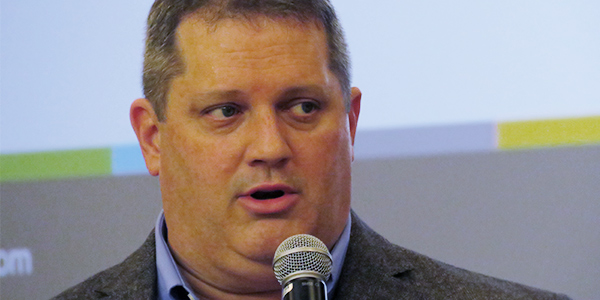By Christen Smith
Wilmington, Del. — PJM riled stakeholders Thursday when it rejected manual language approved by more than two-thirds of members on transmission owners’ supplemental projects.
PJM Vice President of Planning Steve Herling said the RTO would not implement the proposed changes because they were “not consistent” with FERC rulings. “We don’t do this often, but we’re going to have to not implement what the members have approved,” he said immediately after the Markets and Reliability Committee approved the changes in a sector-weighted vote of 3.46 out of 5.
The proposal by American Municipal Power won unanimous support from the Electric Distributors and End-Use Customers sectors, 80% of Other Suppliers and 58% of Generation Owners. But it was opposed by all but one of the Transmission Owners.
2 Paragraphs
Most of the revisions to Manual 14B: PJM Region Transmission Planning Process, including those on the planning process work flow and supplemental projects, were not in dispute.
What PJM rejected were two paragraphs proposed by AMP and backed by Old Dominion Electric Cooperative to increase the transparency of TOs’ supplemental project planning process. Aaron Berner, PJM’s manager of transmission planning, called the disputed text an “overreach” of the RTO’s Regional Transmission Expansion Plan, which he said is limited to studies of load flows, short circuits and stability.
AMP’s proposal said supplemental projects “should be based on written articulable criteria, models and guidelines that are measurable and, to the extent available, quantifiable (e.g., asset replacement prioritization) so stakeholders can replicate TO planning decisions and validate their proposed solutions.” AMP cited the transparency principles in FERC Order 890, saying TOs should disclose asset-specific condition assessments and the criteria and models supporting supplemental projects.
‘Useful’
The RTO also declined AMP’s proposal to strike the word “useful” from references to “end of useful life.”
Ed Tatum, AMP’s vice president of transmission, said the word could be interpreted as an accounting term associated with the depreciable life an of asset. AMP proposed using “operational” instead.
“We don’t replace facilities just because they’ve depreciated,” he said. “If people aren’t going to replace things until their operational life is done, I think it’s OK to say that.”
PJM officials said they did not interpret the word under its accounting definition but rather as an indication of a facility’s reliability and operational effectiveness.
“That language has been accepted by FERC in discussions around this topic,” Berner said. “We don’t believe a clarification is necessary.”
After further discussion, however, PJM committed to insert language indicating that “useful life” is not intended to indicate that facilities might be replaced solely based on them being fully depreciated.
Removing Supplemental Projects
PJM’s rejection of the AMP proposal rendered moot LS Power’s amendment requiring PJM to remove supplemental projects from the RTEP model if they are rejected by state regulatory commissions or their need has been eliminated by other PJM projects. AMP had agreed to accept the LS Power language — which said supplemental projects rejected by state commissions or siting agencies “will generally be removed from the RTEP” — as a friendly amendment.
“There is no place in the current manual that addresses the issue of how supplemental projects get removed from the plan,” said Sharon Segner, vice president of LS Power, who also called for Operating Agreement changes to address broader issues with supplemental projects. Given the increasing spending on TO projects, she said, “That’s too big of an oversight.”
Segner also said that the manual could blur the line between the supplemental and regional planning processes.
According to AMP, TOs added $7.2 billion in projects in 2018 ($5.7 billion in supplemental projects and $1.5 billion in TO baseline projects) while PJM added only $560 million in baseline projects.
Herling opposed the LS Power language.
“There’s a lot of different outcomes that can follow the denial of the [certificate of public convenience and necessity], and it doesn’t make any sense that the manual should have black-and-white rules about when it should be removed from the process,” Herling said. “We feel we have received very clear guidance from the commission as to what goes into the RTEP and what does not.”
Supplemental projects — managed by TOs and not deemed necessary for compliance under PJM’s reliability, operational performance or economic criteria — have tripled over the last 13 years, accounting for 62% of the submitted RTEP project costs since January 2017, according to AMP.
“It is a staggering statistic,” Segner said of the supplementals’ growth. “This is a key issue — that the supplemental process does not dwarf the regional planning process.”
Deferral

After Herling rejected the AMP revisions, Segner pressed for a separate vote to add her amendment to the manual changes the RTO will implement. Her request was opposed by some stakeholders as a circumvention of the committee process.
“To me procedurally what it is saying is ‘I want to bring manual changes straight to the MRC; I don’t want to go through the lower committees,’” said Alex Stern, manager of transmission strategy and policy at Public Service Electric and Gas. “I think everyone needs to look at themselves around the room and think about that.”
Stern’s motion to remand the issue to the Planning Committee failed. But Segner then moved to delay a vote until the Feb. 21 meeting. It passed with 3.69 in favor.






